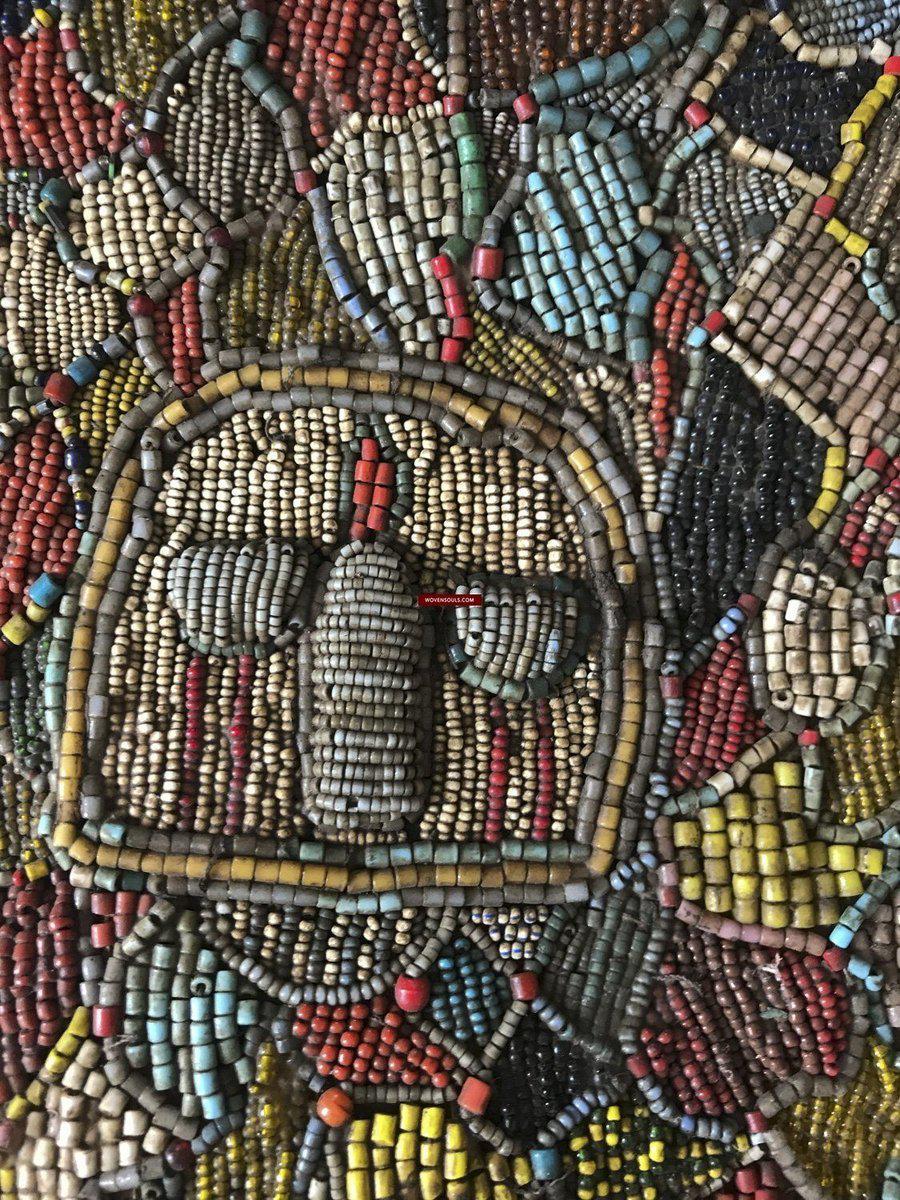Unparalleled Ethnic Masterpiece from the Yoruba people.
Worn by the Shango priest when officiating at ceremonies, the motifs and embellishments in the textile are instrumental in delivering the spiritual pwoers of the Shango priest.
Tunic is completely handstitched.
The beadwork on the front and the back is dense and extravagant suggesting a royal or wealthy or powerful original owner.
Beads are laid out in a lattice wherein each cell is filled in with a particular color and size of bead. Tiny, Small and medium beads are seen in the field of each cell and some of the junction points have large beads. All seem to be made of glass with some having a lovely shimmer / transparency. In a few cells (I could find 3) the lines are made up of beads of two colors alternating.
With the lattice there are motifs of faces and of creatures.
Front: 6 Faces + 8 Animal motifs + 2 Endless Knot Motifs
Back: 6 Faces + 9 Animal motifs + 2 Endless Knot Motifs
Brass Bells with a deep tinkle hang at the bottom of the front and the back.
The inner layer is padded and has a woven indigo dyed lining.
The years have settled into the costume in the form of grime as can be seen in the photos.
The untamed, un-commercialised ethnic aesthetic with a strong sense of cultural identity makes it an absolutely ravishing find!
Estimated to be from the late 1800s
Other examples: http://artmuseum.princeton.edu/story/new-acquisition-royal-yoruba-tunic
Note: Signs of usage present in the form of stains, loose threads, missing beads etc. but overall it in good condition and will be the pride of any world-class museum!
A once-in-a-lifetime find!








































































































































